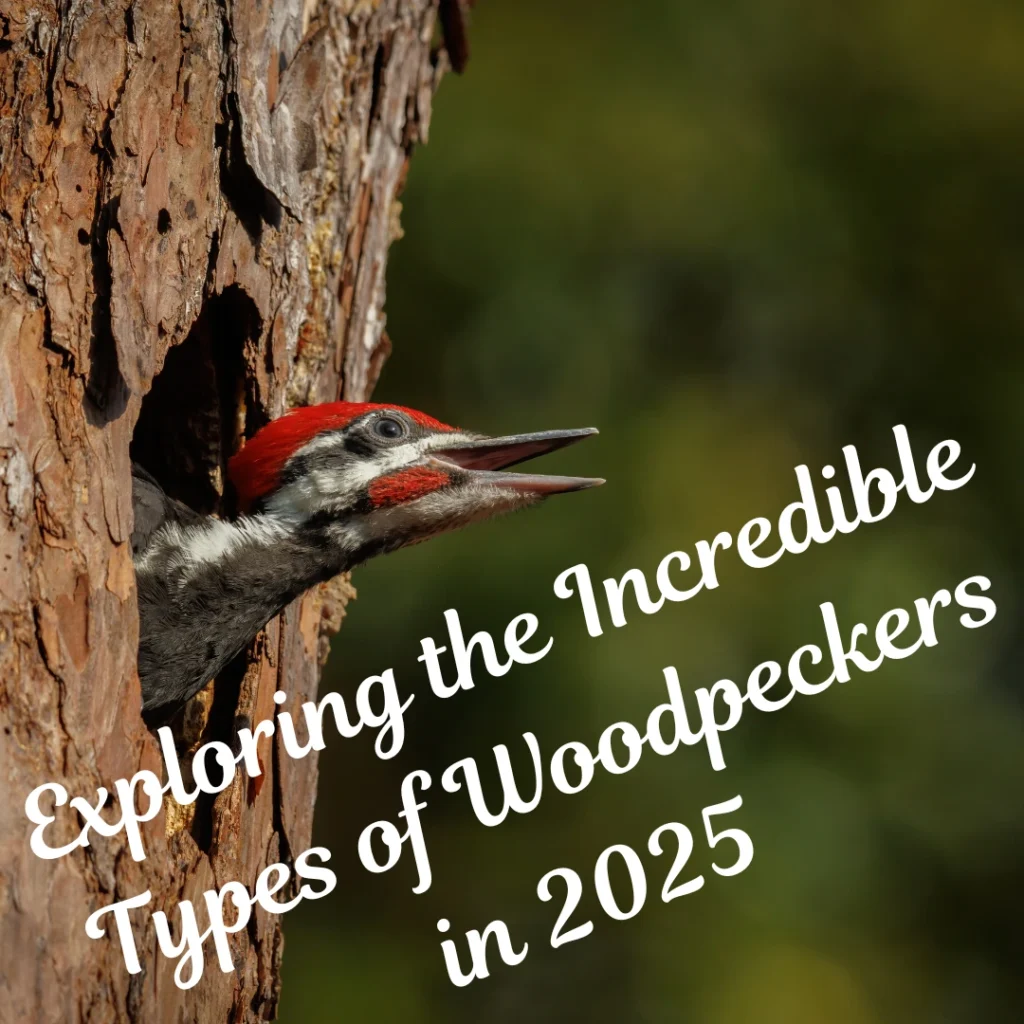1. Introduction
1.1. Brief overview of woodpeckers
Woodpeckers are interesting birds that cling to the trunks of trees with masked certainty and drilling with trees produces a drum-like sound. They cling to trees in search of food and build their homes there. There are about 200 woodpecker species found in the world, some of which we will review in this article.
1.2. Importance of understanding different types
It is important to know the different types of woodpeckers as it will give an idea of their importance in the ecosystem. We will learn how they control insect populations and how they create habitat for other birds and animals in the trees.
2. Common Characteristics of Woodpeckers
All woodpeckers have certain characteristics that enable them to live in trees.
2.1. Physical characteristics
The woodpecker has a strong beak, which it uses to drill in trees to find insects and make nests to live in. The woodpecker’s tongue is long and sticky, with the help of which it catches insects even from holes in trees. In addition, woodpeckers’ feet have two toes pointing forward and two pointing backward, which helps them form a strong grip on the tree while their wings are hard, they support them with trees.
2.2. Feeding Habits
Woodpeckers feed exclusively on insects found inside trees, but some woodpeckers have also been seen eating fruit and nuts.
2.3. Adaptations for tree-drilling
Due to the thick skull and strong muscles of the woodpeckers, they easily absorb the shocks that occur during the drilling of trees.
Table of Contents
3. Major Types of Woodpeckers
There are many types of woodpeckers in the world, so let’s try to know about the popular types.
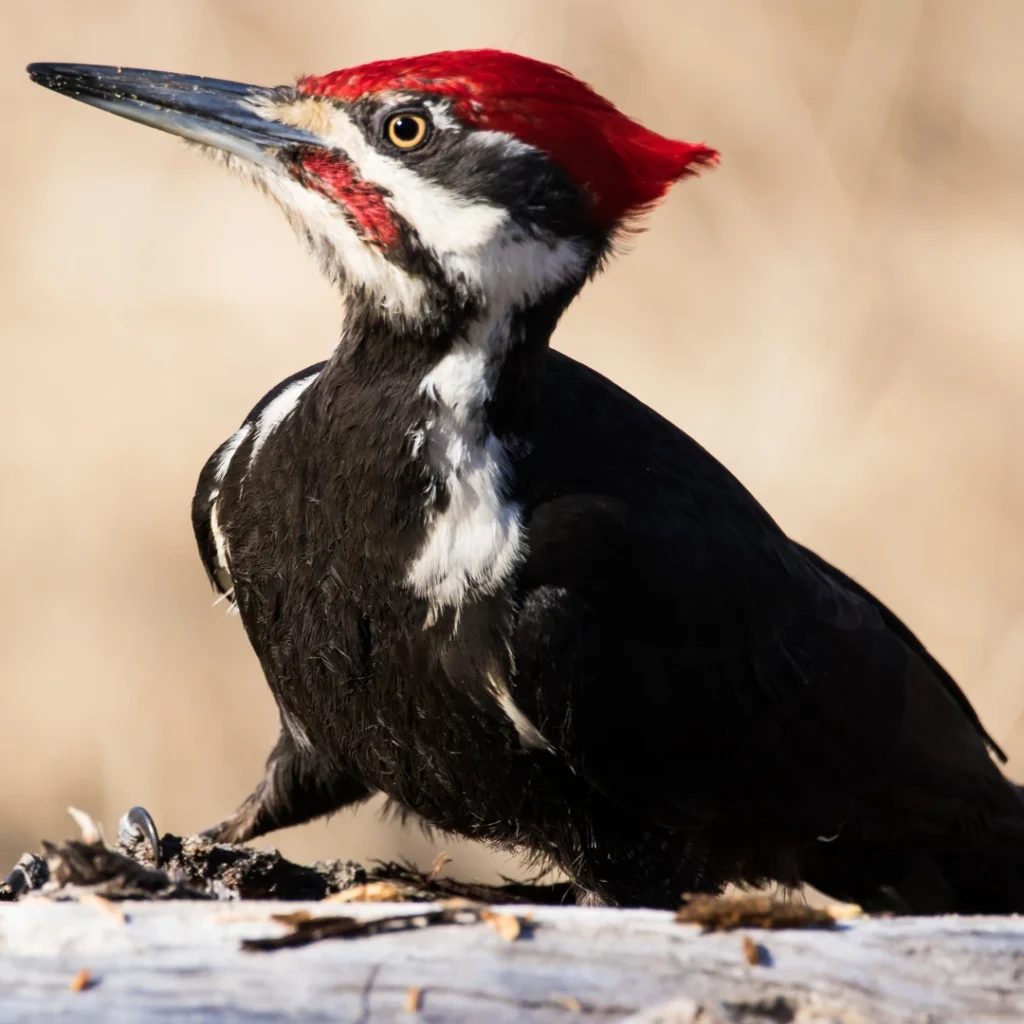
3.1. Pileated Woodpecker
The largest of the woodpecker species found in North America is the Pileated Woodpecker. It is easily recognized by its black body and red crest. In addition, they have a white line on the sides of their necks, while they also have white stripes on their feathers.
Size:
The male of the pileated woodpecker is larger than the female, which is usually 16 to 19 inches.
Habitat:
They are found in dense forests with large dead trees.
Diet:
Pileated woodpeckers feed on ants, fruit, and seeds.
Pileated Woodpecker’s loud drumming makes it a center of attraction for birds.
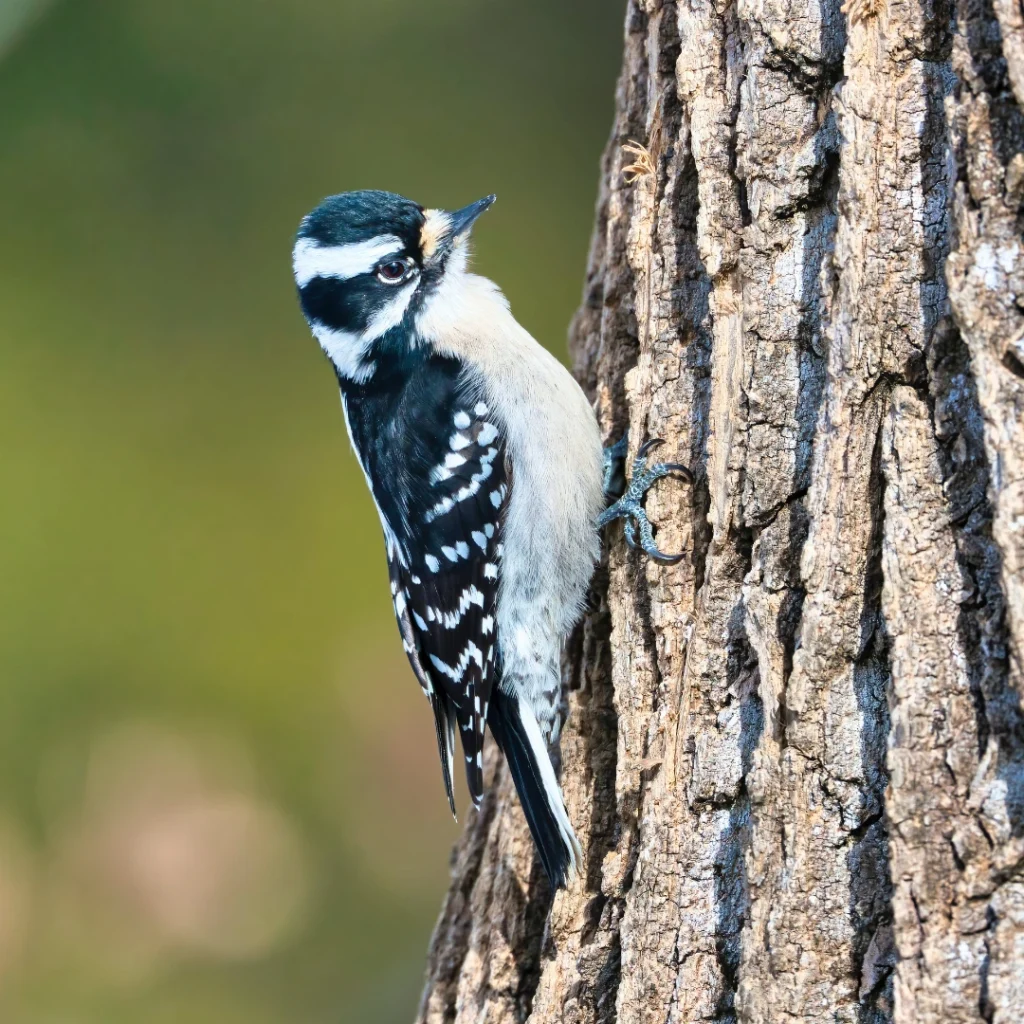
3.2. Downy Woodpecker
The Downy Woodpecker is the smallest species of woodpecker found in the North Americas in which energy is abundant. A male Downy Woodpecker is slightly different from a female Downy Woodpecker. Male Downy woodpecker has black and white feathers while also having a red spot on the head.
Size:
Downy woodpecker size ranges from 6 to 7 inches.
Habitat:
Downy Woodpeckers live in forests and gardens. Apart from this, they are also found in urban areas.
Diet:
Downy woodpeckers consume insects and seeds for food.
Downy Woodpecker and Hairy Woodpecker look a lot alike.
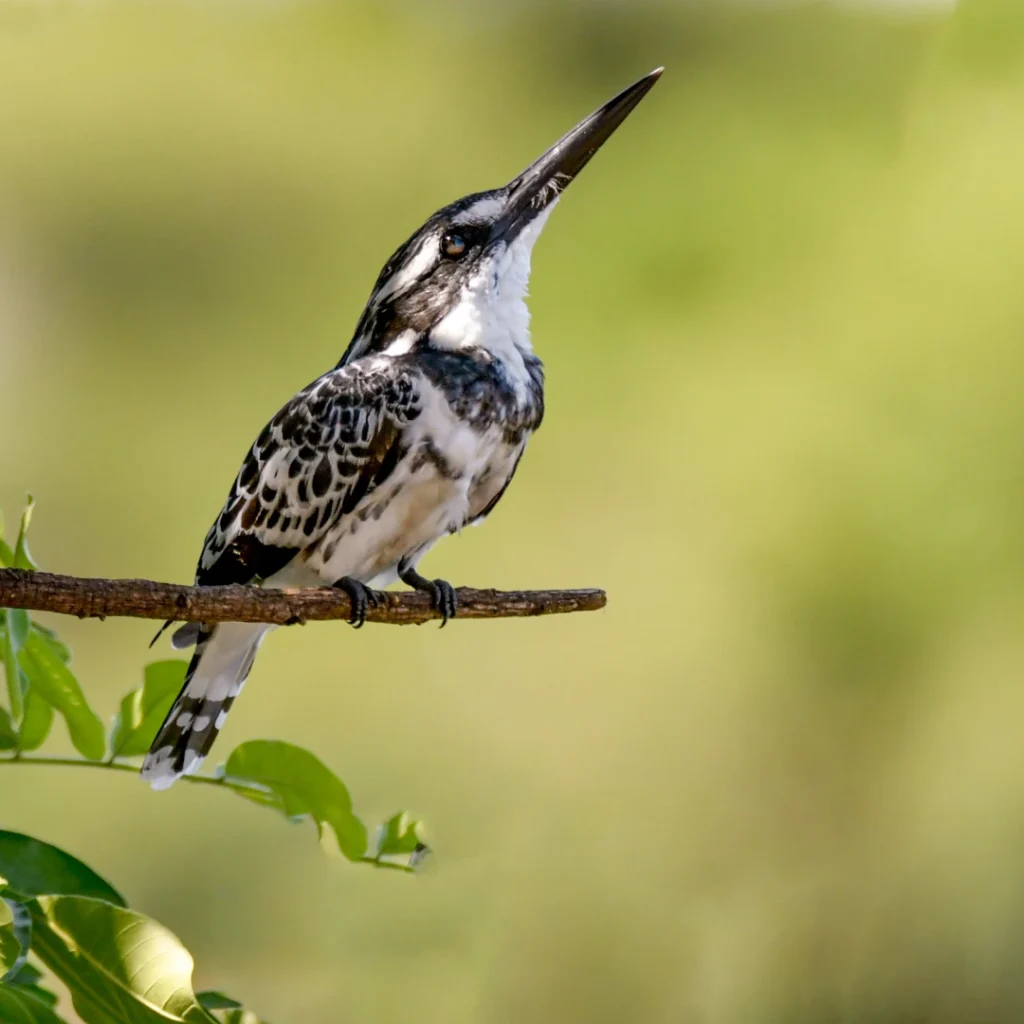
3.3. Hairy Woodpecker
The only difference between Hairy Woodpecker and Downy Woodpecker is the bill. Hairy Woodpecker’s bill is slightly longer than Downy Woodpecker’s bill.
Size:
The average size of a Hairy Woodpecker is about 9 to 14 inches.
Habitat:
Hairy Woodpeckers prefer to live in dense forests But sometimes they also visit the areas where humans put food for them.
Diet:
Harry Word Packers use insects and seeds in food.
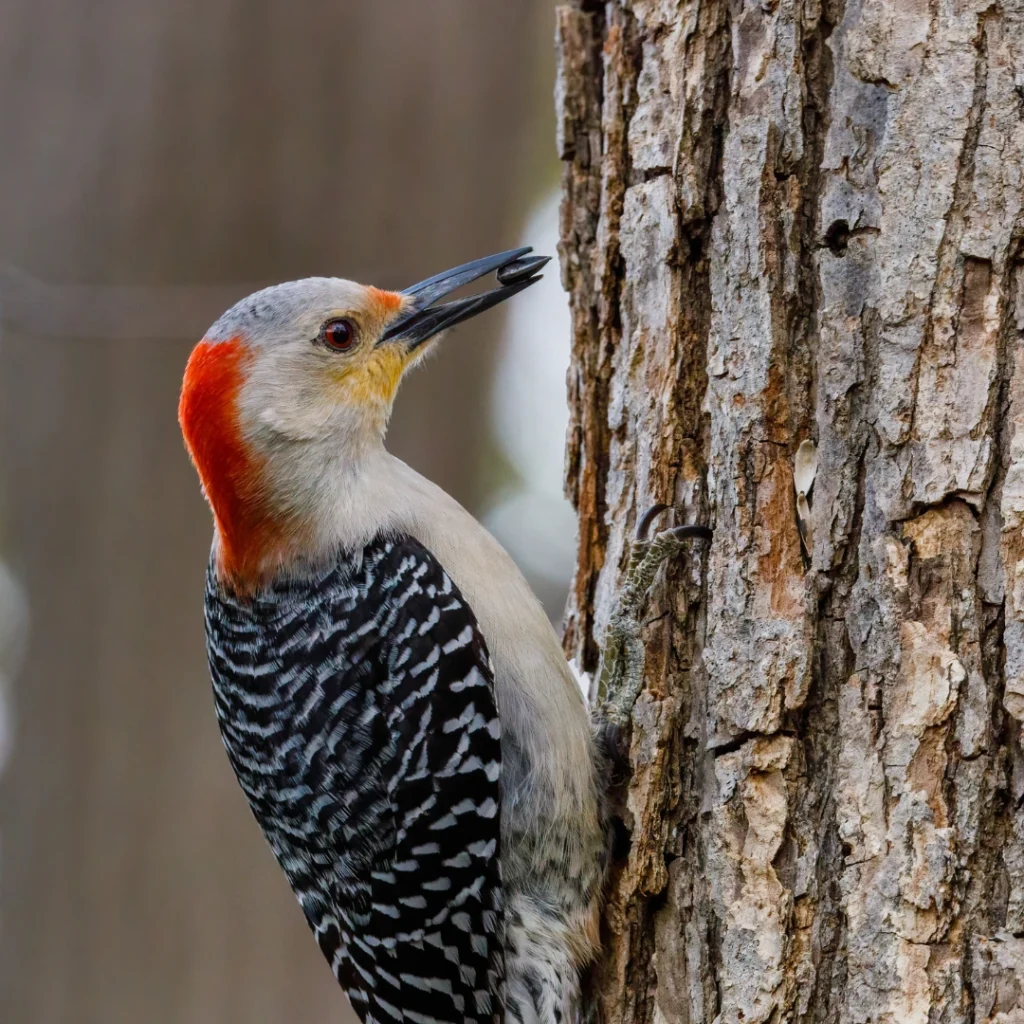
3.4. Red-Bellied Woodpecker
The Red-Bellied Woodpecker is a medium-sized woodpecker that is red in name only. In fact, only its head and nab are more red, while the belly is slightly red, with white and black feathers on the rest of the body.
Size:
The average size of a red-bellied woodpecker is 9 to 10 inches.
Habitat:
The Red-Bellied Woodpecker, like the other Downy Woodpeckers, is found in forests and gardens.
Diet:
Red-bellied woodpeckers use insects, fruits, and seeds in food.
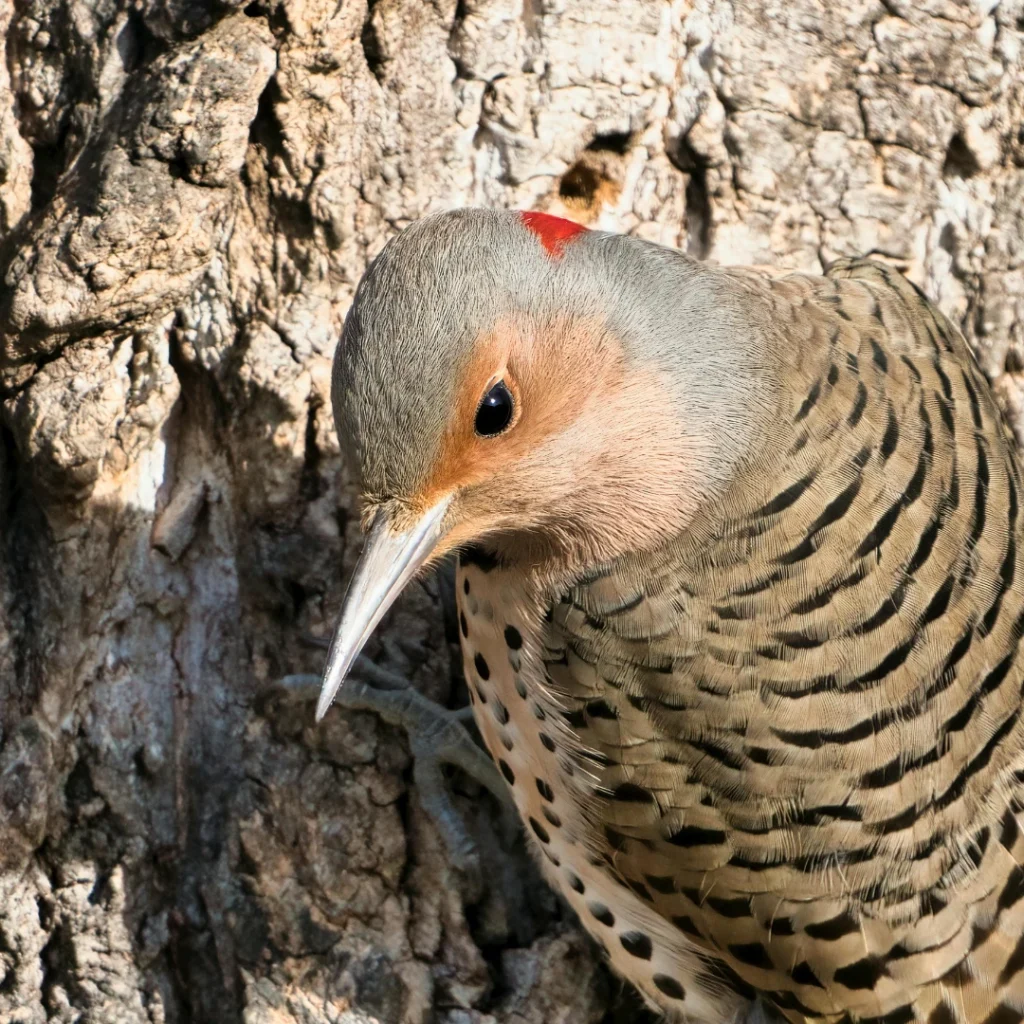
3.5. Northern Flicker
Northern Flickers do not forage in trees like other woodpeckers. Instead, they stay on the ground and find their food in the soil. The body of Northern Flicker is brownish in color with black spots. Apart from this, they also have black bibs.
Size:
The average size of northern flicker is About 12 to 14 inches.
Habitat:
They are mostly found in open forests and fields.
Diet:
Northern flicker uses ants and other ground-dwelling insects as food.
The Northern Flicker remains a focus of attention due to its ground-feeding behavior.
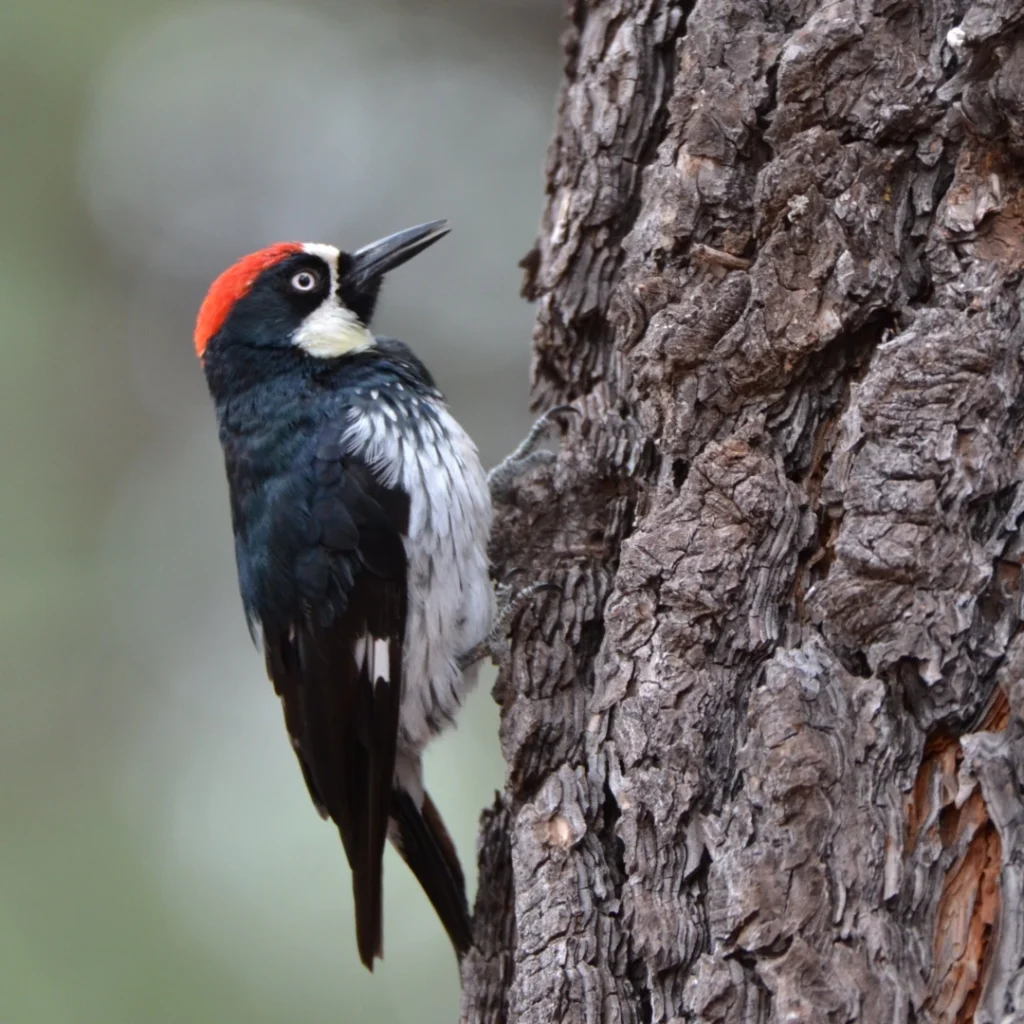
3.6. Acorn Woodpecker
The acorn woodpecker is a type of woodpecker known for collecting acorns in tree trunks. The body of the Acorn woodpecker is black and white in color while the crown is in red color.
Size:
The average size of an Acorn woodpecker is 8 to 9 inches.
Habitat:
Acorn woodpecker is found in oak forests in the western United States.
Diet:
Acorn woodpeckers use acorns, insects, and fruits in their diet.
Acorn woodpeckers live in large social groups and play an important role in the dispersion of seeds.
4. Lesser-Known Types of Woodpeckers
Like the Pileated woodpecker and other popular woodpecker species, there are many other woodpecker species that are less well known. These lesser-known types of woodpeckers have their own unique characteristics. Let’s try to find out information about some of them.
4.1. Black-Backed Woodpecker
Black-back woodpeckers live in forests that have been deforested due to fires. As their name suggests, their backs are black in color, and their lower parts are in white color. Male Black-back Woodpecker also has a yellow crown on the head.
Habitat:
Black-backed woodpeckers are found in North American and Canadian forests that have been burned by fire.
Diet:
They feed on wood-boring beetle larvae found in burnt wood.
The burnt forests in which they are found suggest that these forests are returning to Restoration.
4.2. White-Headed Woodpecker
The name White-Headed Woodpecker shows that the head of this woodpecker will be white while the rest of the body is black color. Male White-headed woodpecker has a reddish spot.
Habitat:
They are found in pine forests in the western United States
Diet:
They use pine seeds and berries for food.
Due to habitat loss, white-headed woodpecker species are considered endangered. It has not even been included in the list of endangered species But as a precaution, one should try to protect them.
4.3. Red-Cockaded Woodpecker
The red-cockaded woodpecker is considered to be one of the rarest species of woodpecker with a black body and white spots on its body. Male Red-Cockaded woodpecker has a red color stripe.
Habitat:
They are found in mature pine forests.
Diet:
They use insects and tree saps as food.
Due to the low population of these species, they have always been the center of attention.
5. The Role of Woodpeckers in Ecosystems
Woodpecker has a role in making the forest environment healthy.
5.1. Creating Nest Cavities
Many woodpeckers build nests by hollowing out holes in trees, which are also used by other birds such as conures and animals such as owls, bats, and squirrels.
5.2. Pest Control
They control the population of tree-boring insects by eating them, which damages trees in the forest.
5.3. Seed Dispersal
Species such as Acorn woodpecker contribute significantly to the spread of forests. Such species are known to collect a variety of seeds and spread them throughout the forest.
5.4. Indicators of Forest Health
The presence of the woodpecker in the forests that have been burned by fire once again gives a sign of greenness.
6. Woodpeckers as a Symbol in Culture
If we study history, we find that in every age and every culture, special importance has been given to woodpeckers.
6.1. Folklore and Legends
The native people of America consider them to be symbols of hard work and some people also consider them to be the protector of trees.
6.2. Woodpeckers in Art and Media
Be it an ancient caricature or a modern cartoon, Woodpecker has gained great popularity among creators and artists. When it comes to modern cartoons, Woody Woodpecker is the best example.
7. Tips for Spotting Woodpeckers
If you want to have a closer look at a woodpecker, follow these instructions.
7.1. Best Seasons and Locations
- By the way, woodpeckers stay active throughout the year, but due to the breeding season in spring, they are visible for a longer time.
- They can be easily seen in places where trees are planted, such as forests, parks, and fields.
7.2. Tools and Techniques
Binoculars:
A good company’s binoculars can help you spot woodpeckers even in tall treetops.
Field Guides:
Be sure to carry a guide with all the species details that can be used to easily identify bird species.
Patience:
Whenever you go to a place where a woodpecker is present, the woodpecker’s drumming will be heard first, allowing you to find him.
8. Woodpecker Conservation Efforts
Some species of woodpecker are increasing, while there are some species that are in danger and need to be saved.
8.1. Reasons Woodpeckers Are Becoming Endangered
Habitat Loss:
Woodpecker nests are also decreasing due to deforestation and food is also becoming scarce.
Climate Change:
Climate change also has a negative impact on woodpeckers. Due to climate change, woodpeckers are now also facing drought.
Pesticide Use:
Due to the use of insecticides, insects that woodpeckers used to eat, are now decreasing.
8.2. Conservation Initiatives
Protected Areas:
Many National Parks and Wildlife Reserve Areas should be built.
Nest Box Programs:
Artificial nests should be planted where woodpecker nests are destroyed.
Public Awareness Campaigns:
People have to be informed about the role and importance of Woodpeckers in the forest.
9. Conclusion
Don’t think of a woodpecker as just a tree-drilling bird, it is an interesting and unique bird. It has a great role in the health and spread of forests. Each of its species, whether they find food on the ground or in the trees, each species has its own characteristics. We must protect woodpeckers as much as we can for our future generations.
10. FAQs
1 . How many species of woodpeckers are there?
Ans. More than 200 woodpecker species are found worldwide.
2 . What is the largest woodpecker species in North America?
Ans. The Pileated Woodpecker is the largest woodpecker in North America with a size of up to 19 inches.
3 . Why do woodpeckers drum on trees?
Ans. Woodpeckers actually drum in trees to make their homes or in search of food.
4 . Can woodpeckers cause damage to trees?
Ans. We can’t say for every tree, but if a tree is weak, it can be damaged.
5 . How can I attract woodpeckers to my backyard?
Ans. By planting more trees and not using insecticides, you can attract the woodpecker in your backyard.
6 . How to get rid of woodpeckers?
Ans. If you want to keep woodpeckers away in your area then hang old CDs on trees or place fake owls.
7 . What do woodpeckers eat?
Ans. They use insects, fruits, seeds, and tree saps as food depending upon their species.

